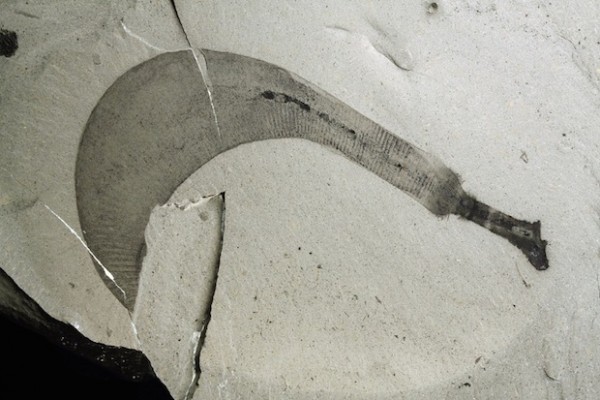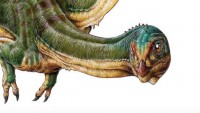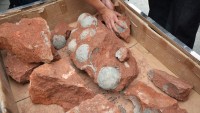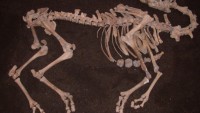New 'Penis Worm' With Teeth Discovered
| Marco Foronda | | May 07, 2015 03:34 AM EDT |
(Photo : Martin Smith) This fossil shows the new species, Ottoia tricuspida.
Scientists discovered a new species of the toothed "penis worm," Ottoia tricuspida (O. tricuspida), by studying the fossilized teeth unearthed from different locations, according to a study published by the Palaeontology journal on Wednesday.
Paleontologists of the University of Cambridge in England closely looked at the teeth of the penis worm fossils to determine its difference from the previously identified species, the Ottoia prolifica (O. prolifica).
Like Us on Facebook
The team studied 40 fossils dug from the Upper Walcott Quarry and are now housed in the Smithsonian Institution and 70 fossils unearthed from the Lower Walcott Quarry and are now in display at the Royal Ontario Museum.
Lead researcher Martin Smith profiled the fossils' teeth as in a dentist's handbook using a microscope and noted unexpected differences.
For instance, the Lower Walcott Quarry specimens had some teeth with a central prong supported by two thin, hollow "denticles" or small tooth-like masses. In contrast, the Upper Walcott Quarry samples had about eight denticles surrounding the corresponding tooth.
These differences, albeit small, were enough to confirm a new species belonging to the phylum priapulida, scientists said. The fossils from the Lower Walcott Quarry were then categorized as O. tricuspida.
Fossils of the first identified species, O. prolifica, measured only a few inches long, according to Smithsonian National Museum of Natural History.
In addition, rows of teeth, tiny hooks, and spines were attached on its proboscis, while the whole of its mouth could be inverted into its trunk. This allowed O. prolifica to eat hyolithids or shelled creatures.
Experts also noted that penis worms might have cannibalized their kind.
Penis worm fossils were first discovered in 1911 by paleontologist Charles Walcott in the Burgess Shale, a rock formation in the Canadian Rockies.
The fossils shared rocks with fossils of other bizarre critters like velvet worms and trilobytes of the Cambrian period in that geologic location.
TagsFossils, penis worm, University of Cambridge, Smithsonian Institution, Royal Ontario Museum, Smithsonian National Museum
©2015 Chinatopix All rights reserved. Do not reproduce without permission
EDITOR'S PICKS
-

Did the Trump administration just announce plans for a trade war with ‘hostile’ China and Russia?
-

US Senate passes Taiwan travel bill slammed by China
-

As Yan Sihong’s family grieves, here are other Chinese students who went missing abroad. Some have never been found
-

Beijing blasts Western critics who ‘smear China’ with the term sharp power
-

China Envoy Seeks to Defuse Tensions With U.S. as a Trade War Brews
-

Singapore's Deputy PM Provides Bitcoin Vote of Confidence Amid China's Blanket Bans
-

China warns investors over risks in overseas virtual currency trading
-

Chinese government most trustworthy: survey
-

Kashima Antlers On Course For Back-To-Back Titles
MOST POPULAR
LATEST NEWS
Zhou Yongkang: China's Former Security Chief Sentenced to Life in Prison

China's former Chief of the Ministry of Public Security, Zhou Yongkang, has been given a life sentence after he was found guilty of abusing his office, bribery and deliberately ... Full Article
TRENDING STORY

China Pork Prices Expected to Stabilize As The Supplies Recover

Elephone P9000 Smartphone is now on Sale on Amazon India

There's a Big Chance Cliffhangers Won't Still Be Resolved When Grey's Anatomy Season 13 Returns

Supreme Court Ruled on Samsung vs Apple Dispute for Patent Infringement

Microsoft Surface Pro 5 Rumors and Release Date: What is the Latest?














